#california aglaja
Explore tagged Tumblr posts
Text
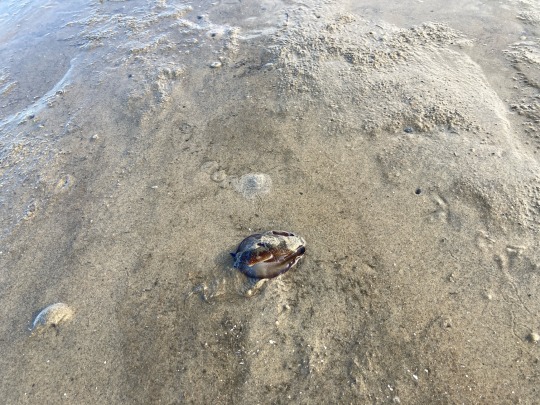
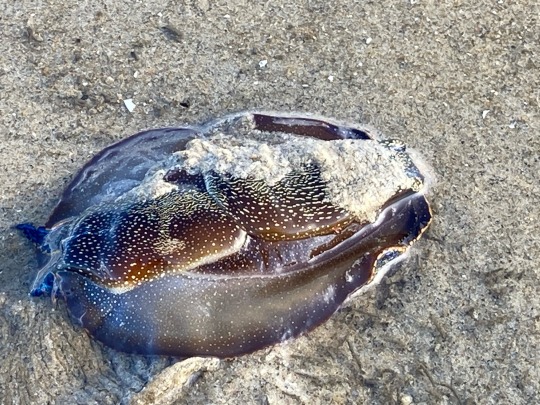

2 notes
·
View notes
Text


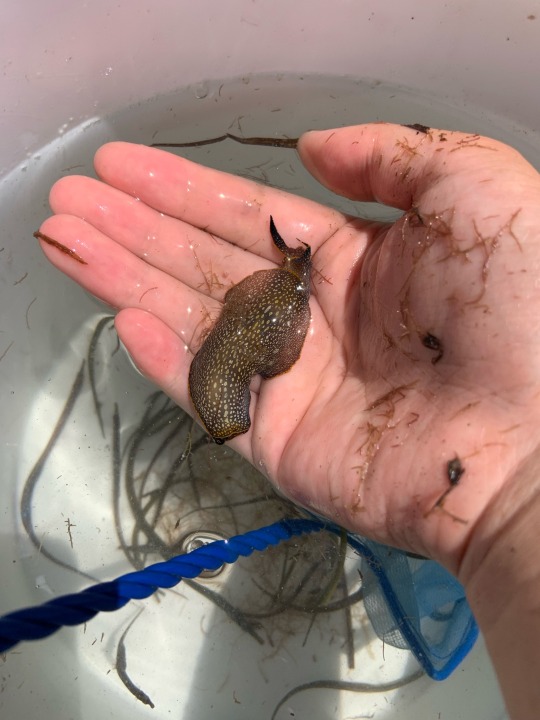
yay sluggs
#didn’t post these before so here they are#first and second pics are of an orange peel doris the second is under water so you can see the horns better#third is a california aglaja we got a bunch and a lot were much bigger but this is the only pic i got#oh you can see all the pipefish in the third pic too cuz i was using their bucket#fish
17 notes
·
View notes
Photo


California Aglaja (Navanax inermis)
The Californian Aglaja is a large species of predatory sea slug. Despite appearances, it is not a nudibranch and belongs to a group called Cephalaspidea, or the shieldhead slugs. Having no eyes, it hunts by tracking the slime trails of other sea slugs with chemoreceptors
(source)
3K notes
·
View notes
Photo









Photos via Washington State Department of Ecology:
1. Spanish Shawl Nudibranch 2. Sea Cucumber, Holothuroidea 3. California Aglaja Sea Slug 4. Sandcastle Worm 5. Hermit Crab 6. Target Prawn 7. Slime Worm, Myxicola sp. 8. Hair Worm, Cirratulidae 9. Sea Star
Photos by LA Urban Ocean Expedition Staff
178 notes
·
View notes
Text
Sea Slugs on the Elkhorn Slough - Observation of the Week, 7/7/19
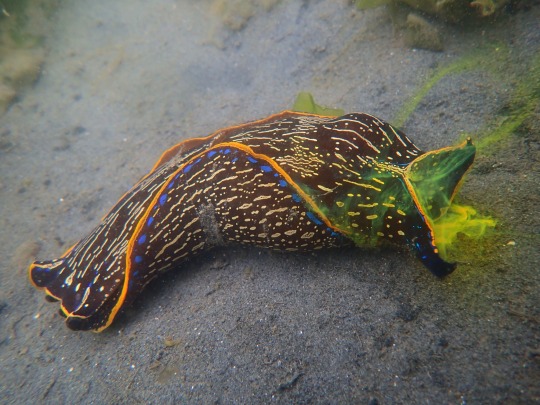
Our Observation of the Week is this Navanax inermis sea slug, seen in the United States by lmkitayama!
“At work they call me the Slug Queen,” says Lauren Kitayama, an Assistant Manager at Kayak Connection in California. “Daylight permitting, I paddle once a week before work on the Elkhorn Slough. A couple of years ago, if you'd asked any of the local guides they might have said there were 5 species of sea slug on the slough. Last year I documented 27!”
The slug seen above was one of twenty Navanax inermis she spotted that morning, and said they were mating on the sea lettuce near the dock at work. “They are one of my favorite slugs,” she says,
They are large enough for people to appreciate, and so absolutely beautiful! I love using them to get people excited about the unloved slimy things that live in the ocean. One of my goals is always to show people something they never even imagined existed on the planet, and Navanax are a great opportunity to do that. As a kayak guide I work with a lot of school children, and love having the chance to inspire them to protect and appreciate the natural world around them.
While nudibranchs are the most commonly known order of sea slug, the Navanax inermis belongs to an entirely different order: Cephalaspidea, or the headshield slugs. Most members of this order, including the California Aglaja, do have a shell, but it is usually either tiny or internal. Navanax inermis are large slugs, growing anywhere from 2.5 to 10 inches (6.35 - 25.4 cm) in length, and they prey upon other gastropods and even small fish!
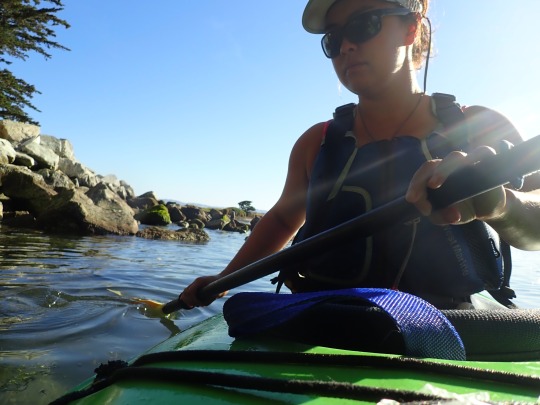
Lauren (above) earned a Masters in Marine Conservation from the University of Miami (FL), where she focused on the impacts of marine debris. “I am zealous about protecting the oceans from plastic...[and] someday I hope to work for the UN attacking the plastic pollution problem in Southeast Asia.” For now, however, she says she loves her current job, and tells me
My favorite thing is to see something I've never seen before. "I don't know" is my favorite answer to the question, "what is it?" I think that's how this whole slug thing started. They are beautiful, and most people would never look for them/see them without a guide. For whatever reason my slug observation skills are great. Can't find my keys half the time (or the sunglasses that are on my head), but a 9 mm sea slug hiding in a patch of kelp... no problem.
With my ecologist brain, I am excited to continue documenting slugs on the slough to see if a temporal pattern emerges (when are particular species showing up? Are they predictably in the same locations year after year?) I try very hard to get a photo of every species I see every week so that I can continue to document their presence/absence on the slough.
- by Tony Iwane.
>
- Check out Lauren’s Litter Mermaid projects and blog!
- And her sea slug observations.
- Watch a Navanax inermis eating a California Seahare.
- And watch a pair mating!
14 notes
·
View notes
Photo

This what I be into and I can’t stop thinking about it. 🤠🧜🏿♂️💅🏽 Spanish Shawl (Flabellinopsis iodinea) Red Dorid (Rostanga pulchra) McDonald’s Dorid (Limacia McDonald) Stearns’ Aeolid (Austraeolis stearnsi) California Flatworm (Hylocelis californica) Striped Flatworm (Praestheceraeus bellostriatus) California sea hare (Aplysia californica) California Aglaja (Navanax inermis) <3 Hopkin’s Rose (Okenia rosacea) https://www.instagram.com/p/CUJtopTLARE/?utm_medium=tumblr
1 note
·
View note
Photo


California Aglaja (Navanax inermis)
...a species of headshield slug (Cephalaspidea) which occurs in the eastern Pacific Ocean, ranging from the Bolinas Lagoon in California south to Jalisco in Mexico. N. inermis is voracious predator, feeding on a range of various other sea slugs and bubble snails, using chemoreceptors to track the trails of its prey.
Classification
Animalia-Mollusca-Gastropoda-Heterobranchia-Euthyneura-Euopisthobranchia-Cephalaspidea-Philinoidea-Aglajidae-Navanax-N. inermis
Images: Magnus Kjaergaard and Ed Bierman
#California Aglaja#Navanax inermis#Headshield Slug#Mollusca#Gastropoda#Heterobranchia#Euthyneura#Euopisthobranchia#Cephalaspidea#Philinoidea#Agaljidae#Navanax#Pacific#Ocean
214 notes
·
View notes
Photo
seatrench: California Aglaja (Navanax inermis) The Californian Aglaja is a large species of predatory sea slug. Despite appearances, it is not a nudibranch and belongs to a group called Cephalaspidea, or the shieldhead slugs. Having no eyes, it hunts by tracking the slime trails of other sea slugs with chemoreceptors. (Source)


#sea slug#sea slugs#predatory#predatory sea slug#predatory sea slugs#californian aglaja#gastropod mollusc#gastropod molluscs#navanax#navanax inermis#cephalaspidea#shieldhead slug#shieldhead slugs#opisthobranch#animal#animals#gif#gifs#close-up#nature
3K notes
·
View notes